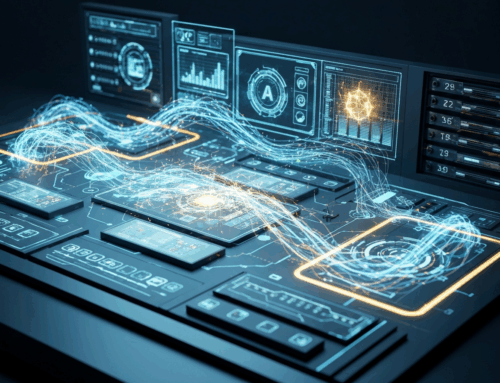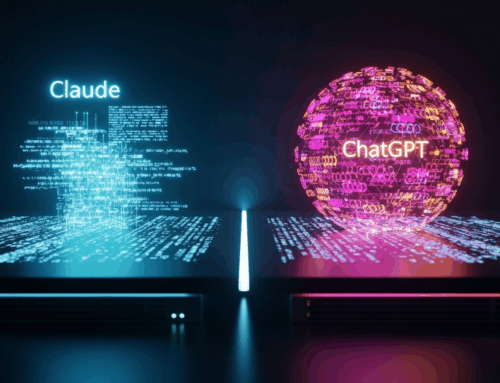The High-Impact Imperative Moving Beyond Isolated AI Automation
Generative AI has become ubiquitous across the enterprise, yet many organizations—even in forward-thinking markets like Charlotte, NC—have hit a productivity wall. This is the “Gen AI Paradox”: widespread adoption of tools like horizontal copilots and chatbots has not translated into material contributions to the bottom line for the vast majority of companies. The issue lies in the approach. While reactive tools enhance individual productivity through isolated tasks, they fail to drive the fundamental process transformation required for true business value.
The solution is the move from reactive assistance to autonomous execution, a shift powered by AI agents. These intelligent systems leverage large language models (LLMs) with components for planning, memory, and tool integration, enabling them to understand complex goals and execute multi-step tasks independently. Unlocking this next level of efficiency and strategic advantage necessitates Scaling autonomous AI with the Agentic Mesh architecture. This architectural paradigm is the critical bridge that allows businesses to transition from scattered, siloed AI experiments to a cohesive, governed, and highly scalable ecosystem of autonomous agents that drive end-to-end process reinvention.
Scaling autonomous AI with the Agentic Mesh architecture The Strategic Framework
Achieving transformative results requires more than simply deploying a handful of AI agents; it demands a fundamental architectural reset. The Agentic Mesh architecture is a composable, distributed, and vendor-agnostic framework specifically designed to govern the rapidly evolving landscape of enterprise AI. It addresses the core pain points of siloed AI initiatives, technical debt, and the inherent risk of non-deterministic systems.
According to expert analysis, the Agentic AI Mesh acts as the vital connective and orchestration layer, enabling large-scale, intelligent agent ecosystems to operate safely and efficiently while managing mounting risks like “agent sprawl”—the uncontrolled proliferation of redundant or ungoverned agents across the organization. This framework repositions AI initiatives from tactical projects to strategic programs focused on business process reinvention, a pivot that moves beyond optimizing isolated tasks to transforming entire value chains.
The shift embodied by Scaling autonomous AI with the Agentic Mesh architecture requires organizations to transition their focus across four strategic dimensions:
- From Scattered Initiatives to Strategic Programs: Aligning AI with critical business priorities instead of running bottom-up experiments.
- From Use Case to Business Processes: Reimagining entire workflows, not just optimizing single steps.
- From Siloed AI Teams to Cross-Functional Squads: Embedding AI expertise directly with business, data, and IT functions.
- From Experimentation to Industrialized Delivery: Designing solutions for scalability, security, and economic sustainability from day one.
Decoding the Agentic Mesh A Blueprint for Distributed Intelligence and Agentic Coding
The Agentic Mesh is often conceptualized as an “Internet for Agents,” where individual agents can discover, collaborate, and transact across a distributed network of systems and tools. This architecture is defined by five mutually reinforcing principles that ensure a system can handle the complexity and risk of autonomous operation.
The blueprint for this distributed intelligence system provides the necessary guardrails for true agent autonomy:
- Composability: Any agent, tool, or LLM can be easily plugged into the mesh without requiring system-wide rework. This is key for future-proofing your investment and avoiding vendor lock-in.
- Distributed Intelligence: Complex tasks are decomposed and resolved by networks of cooperating, specialized agents, allowing for true division of labor and parallel processing.
- Layered Decoupling: Core functions—such as logic, persistent memory, orchestration, and user interfaces—are separated into distinct layers. This enables one component (e.g., the LLM) to be updated or replaced without disrupting the entire workflow.
- Vendor Neutrality: A preference for open standards, such as the Model Context Protocol (MCP) and Agent2Agent (A2A), over proprietary APIs, ensures interoperability between different frameworks and platforms.
- Governed Autonomy: Agent behavior is not unchecked. It is proactively controlled via embedded policies, permissions, and escalation mechanisms that are built directly into the mesh’s architecture, ensuring safe and transparent operation.
By enforcing these principles, the Agentic Mesh enables a collaborative environment for autonomous agents to find each other and deliver accurate solutions in a structured ecosystem.
From Task Automation to Process Reinvention Strategic Value in AI Workflows
The real breakthrough of the Agentic Mesh is its capacity to move beyond mere efficiency gains—where humans are just slightly faster—to genuine operational and revenue-generating reinvention. When agents are simply bolted onto existing processes, the productivity improvement is modest, perhaps 5 to 10 percent. When the process is fully redesigned around the agents’ ability to orchestrate, adapt, and learn, the impact is transformative.
The Transformation Tiers of AI Automation
The strategic value of AI agents can be categorized into three tiers:
| Tier | Approach | Example | Impact |
|---|---|---|---|
| Tier 1: Task Automation | Agents assist humans within the existing, sequential workflow. | AI summarizes meeting notes for a human agent. | Modest time savings (5–10% productivity boost). |
| Tier 2: Workflow Optimization | Agents handle isolated steps and low-complexity issues autonomously. | Agent classifies incoming tickets and handles password resets. | Significant efficiency gains (20–40% time savings). |
| Tier 3: Process Reinvention (Agentic Mesh) | Agents proactively monitor, anticipate needs, initiate resolutions, and adapt the entire workflow dynamically. | Agent detects a delayed shipment, automatically issues a partial refund, and notifies the customer—all without human initiation. | Transformative; up to 80% autonomous resolution, 60–90% reduction in time to resolution. |
For high-value processes, this capacity for dynamic adaptation offers two strategic benefits:
- Supercharged Operational Agility: In complex scenarios, such as supply chain management, an agent can continuously forecast demand, identify risks (e.g., port delays), and dynamically replan transport and inventory flows, optimizing service levels, reducing costs, and boosting resilience.
- Unlocking New Revenue Streams: For e-commerce businesses—whether operating on WooCommerce or Shopify—agents can analyze real-time user behavior to surface proactive upselling and cross-selling offers. This can also extend to creating entirely new, subscription or performance-based revenue models by encapsulating internal expertise into AI agents offered as a service.
Operationalizing the Mesh Case Studies in Database Cleanup and Custom CRM Development
Real-world examples illustrate how multi-agent collaboration, facilitated by the Agentic Mesh, delivers results beyond what siloed AI can achieve. The mesh provides the necessary infrastructure for these complex, multi-step operations to maintain integrity, security, and context.
Case Study 1: Legacy Application Modernization at a Large Bank
A major financial institution faced a massive, multi-year project to modernize its core legacy system. Instead of relying solely on large human teams performing manual, repetitive tasks, the organization implemented a hybrid “digital factory” using AI agents. The agentic approach involved squads of specialized agents for documentation, code writing, and code review, all contributing to a shared objective. Human workers were elevated to supervisory roles, overseeing the agent squads and focusing on strategic guidance and quality control.
The result of this governed, agent-driven collaboration was a potential 50 percent reduction in time and effort in the early adopter teams, demonstrating that agents, when coordinated by a mesh architecture, can drastically accelerate even the most complex enterprise-wide transformations.
Case Study 2: Boosting Data Quality for Market Intelligence
A market research firm struggled with manual data gathering and structuring, leading to errors—80% of which were only identified by clients. The firm deployed a multi-agent solution designed to autonomously identify data anomalies and explain market shifts. These agents analyze internal signals and external events (identified via web searches) to synthesize and rank the most influential drivers. This advanced search and contextual reasoning, enabled by a robust mesh, often surfaces insights that human analysts would be challenged to uncover manually. The expected outcome is a productivity gain of over 60%, showcasing the power of agents to drive not just efficiency, but deeper, more accurate business intelligence.
Governance, Integration, and Control Navigating Agentic Sprawl with N8N Workflows
The primary non-technical challenge in Scaling autonomous AI with the Agentic Mesh architecture is managing the associated risks: autonomy drift, lack of observability, and agent sprawl. As agents gain the ability to act independently, a strong governance framework is essential. The mesh is the architectural solution to this problem, requiring a robust governance and orchestration layer.
Governed Autonomy and Observability
The Agentic Mesh addresses these risks by making every agent interaction traceable, logged, and subject to pre-defined constraints. Key operational capabilities include:
- AI Asset Registry: A central, version-controlled repository for critical assets like system prompts, tool definitions, and policies. This allows organizations to create “golden agents” that are battle-tested and enforce corporate standards, mitigating the risk of non-compliant behavior while preserving institutional knowledge.
- Evaluations: Continuous integration tests for agentic systems. These pipelines run structured test suites upon deployment or model updates to validate correctness at the step-level and the overall workflow-level.
- Authentication and Authorization: Every agent-to-agent or agent-to-system call is authenticated. The “principle of least privilege” is enforced, ensuring agents only access the exact resources they need for a specific task, limiting the potential “blast radius” of a security incident.
The Role of Workflow Orchestration Tools
For organizations, particularly small to medium-sized businesses in the Charlotte, NC metropolitan area, platforms like n8n are integral components *within* the mesh architecture. Tools such as n8n specialize in building sophisticated AI agentic workflows that leverage LLMs for dynamic decision-making and non-linear processes.
While n8n is a visual, low-code platform, it moves beyond traditional stateless automation by providing advanced design patterns necessary for the Agentic Mesh:
- Chained Requests: Executing a series of predefined commands across multiple models or services.
- Single Agent with State: Allowing one agent to maintain context and state (memory) throughout a complex, multi-step process.
- Multi-Agent Teams: Orchestrating collaboration where a “gatekeeper” agent delegates specialized tasks to subordinate agents, effectively managing distributed expertise.
This capability, when paired with the governance mechanisms of a centralized mesh, allows Idea Forge Studios to deliver tailored, high-impact automation solutions that are both flexible and secure, overcoming the limitations that come from using purely off-the-shelf tools that lack control over the core logic and governance features of enterprise-grade AI.
The CEO’s Pivot How Thought Leadership Drives the Next-Generation Operating Model
The transition to a mesh-based operating model is not a technical project for the CIO; it is a strategic imperative led by the CEO. It demands a top-down decision to move past the era of low-impact experimentation that defines the Gen AI Paradox. Leaders must recognize that agents are not merely tools for augmentation but the foundation for the next-generation operating model.
The definitive competitive advantage will belong to the organizations that successfully move from a scattered landscape of individual AI initiatives to a cohesive, mesh-governed system. This shift requires three decisive actions from senior leadership:
- Conclude and Realign: Formally audit existing AI pilots. Retire those that are unscalable, and realign resources to strategic, high-impact programs that promise end-to-end process reinvention.
- Redesign the Operating Model: Establish a strategic AI council composed of business, HR, IT, and data leaders. This council must coordinate investments and implement rigorous value-tracking mechanisms tied directly to business outcomes, ensuring human workers are upskilled for “human + agent” cohabitation.
- Launch Lighthouse Projects and the Technology Foundation: Simultaneously initiate a select number of high-impact agentic workflow transformations in core business areas while laying the groundwork for the Agentic Mesh technology foundation. This involves investing in the architectural enablers—data productization, governance frameworks, and the core mesh infrastructure—to ensure that when high-value agents are developed, they are instantly scalable and secure.
This is the strategic divergence point. By establishing the Agentic Mesh architecture, enterprises can realize the full potential of Scaling autonomous AI with the Agentic Mesh architecture, transforming their operations, creating new revenue streams, and solidifying their position as leaders in the digital economy.
Ready to Scale Autonomous AI and Reinvent Your Business Processes?
The transition to a powerful, governed Agentic Mesh architecture is a strategic imperative. Don’t let your AI initiatives remain scattered; move to true operational transformation with Idea Forge Studios’ expertise in digital strategy.
Take the next step:
- Schedule Your Strategic AI Consultation
- Prefer to call? Reach our team directly at (980) 322-4500.
- Or send a detailed service inquiry to info@ideaforgestudios.com.








Get Social